First Fundamental: Political Will
The first fundamental of this approach was unwavering political will. Rajapakse clearly conveyed to General Sarath Fonseka: “eliminate the LTTE.” To the outside world he conveyed the same message differently: “either the LTTE surrenders or face, their end.” Rajapakse instructed the Sri Lankan Army that their job was to fight and win the war. At whatever cost, however bloody it might be. He would take care of political pressures, domestic and international.
It is the political leadership with the commitment of the military that led the battle to success.
General Fonseka commented: “It is the political leadership with the commitment of the military that led the battle to success. We have the best political leadership to destroy terrorism in this country. It was never there before to this extent. The military achieved these war victories after President Mahinda Rajapakse came into power. He, who believed that terrorism should and could be eliminated, gave priority do go ahead with our military strategies. And no Defence Secretary was there like the present Secretary Gotabhya Rajapaksa who had the same commitment and knowledge on how to crush the LTTE. Finally, they gave me the chance of going ahead with the military plan.”
Second Fundamental: Go To Hell
Following from the first, the second principle of Rajapakse’s ‘how to fight a war and win it’ is telling the international community to “go to hell.” As the British and French foreign ministers, David Miliband and Bernard Kouchner, found out during their visit. They were cold shouldered for suggesting that Sri Lanka should halt the war and negotiate with the LTTE. As Rajapakse said during the post-interview chatter “we will finish off the LTTE, we will finish terrorism and not allow it to regroup in this country ever; every ceasefire has been used by the LTTE to consolidate, regroup and re-launch attacks, so no negotiations.” Eliminate and Annihilate – two key operational words that went with the “go to hell” principle of the ‘Rajapakse Model’. After Colombo declared victory the Sri Lankan Army Commander Lt Gen Sarath Fonseka used words used by Rajapakse. That the SLA will not allow the LTTE to “regroup”.
Third Fundamental: No Negotiations
Naturally, the third fundamental was no negotiations with the LTTE. “The firm decision of the political hierarchy not to go for talks with the LTTE terrorists until they lay down arms had contributed significantly to all these war victories,” affirms Fonseka. But this meant withstanding international pressure to halt the war, the humanitarian crisis spawned by the war and the rising civilian casualties. Rajapakse did all of this by simply ensuring ‘silence’ and information blackout under which the war was conducted. Rajapakse’s biggest gamble was to give the military a free hand, shut the world out of the war zone.
When the United Nations, US and European countries raised concerns of high civilian casualties, Rajapakse, said that the international community was “getting in the way” of Sri Lanka’s victory against terrorism. “We knew that the moment the military is close to operational successes, there will be loud screams for the resumption of the political process of peace negotiations. But there will be no negotiations.” That was the rock solid stand taken and communicated by Sri Lanka’s Defence Secretary Gotabhaya Rajapakse to all visiting dignitaries and diplomats.
Fourth Fundamental: Regulate Media
With just one version of the war available for the media to report, the Sri Lankan government ensured an unidirectional flow of conflict information. The information put out by the LTTE’s official website, TamilNet, could not be independently verified on the ground because access to the war zone was regulated and controlled. This was a vital fourth principle in the strategic matrix of the Rajapakse model.
“Presidents Premadasa and Chandrika Bandarnaike gave orders to the military to take on the LTTE. But when success was near, they reversed the orders and instructed the military to pull back, to withdraw from operations because of international concerns about the humanitarian crisis and civilian casualities. So we had to ensure that we regulated the media. We didn’t want the international community to force peace negotiations on us,” says a senior official in the President’s office who wishes to remain anonymous.
Fifth Fundamental: No Cease-Fire
Rajapakse’s brother, Gotabhaya Rajapaksa, who consistently maintained that military operations would continue unhindered. “There will be no ceasefire,” was Gotabhaya’s uncompromising message. The clear, unambiguous stand enabled other prominent personalities in the Rajapakse cabinet to speak in a uniform voice. “Human rights violations during war operations and the humanitarian crisis that engulfs civilians caught in the cross fire have always been the trigger points to order a military pull-back,” asserted Mahinda Samarasinge, Minister for Human Rights and Disaster Management. “The LTTE would always play this card in the past. They would use the ceasefire to regroup and resume the war.”
Prabhakaran was aware of the political contradictions in Sri Lanka and so was confident that the SLA will not indulge in an adventurous, all guns blazing, a full onslaught against the LTTE.
President Rajapakse was clear that he did not want to go down that route. That was the traditional way of fighting the LTTE – two steps forward, four steps back. The Rajapakse brothers’ commitment to a military solution was cast in stone. And it was anchored in a deft political arrangement. But first it is important to reveal the idea behind the political arrangement. “It was to ensure that there would be no political intervention to pull away the military from its task of comprehensively and completely eliminating the LTTE,” says a senior official in the President’s Office. “Prabhakaran was aware of the political contradictions in Sri Lanka and so was confident that the SLA will not indulge in an adventurous, all guns blazing, a full onslaught against the LTTE.”
Sixth Fundamental: Complete Operational Freedom
Gotabhaya Rajapakse’s appointment to the post of Defence Secretary was made precisely to break this political logjam. Gotabhaya had a military past. He had taken voluntary retirement from the SLA. He had retained his long standing friendship with Lt General Sarath Fonseka. Gotabaya met Fonseka and asked him, “can you go for a win”? The battle-hardened veteran said “yes, but you will have to permit me to pick my own team.” Gotabaya and Mahinda agreed. “We will let the military do its job, while we hold the fort, politically,” they told Fonseka. This deft political arrangement worked because both, Gotabhaya and Fonseka, were recruited and commissioned into the army at the same time.
This is the team Fonseka handpicked by August 2006 – Major General Jagath Dias, commander of the 57 Division, Brigadier Shavendra Silva, commander of Task force One also the 58 Division (the SLA formation that has recorded the maximum victories against the LTTE), Major General Nandana Udawatta, commander of the 59 Division and Major General Kamal Gunarathne and Brigadier Prasanna Silva, commanders of the 53 and 55 Divisions respectively. Their task was to recapture 15,000 square kilometers of area controlled by the LTTE. The defection of LTTE’s Eastern chief, Karuna, helped the Army take over Batticoloa, Tamil Tigers’ eastern stronghold on July 11, 2007.
By the time of LTTE’s defeat in the East, the 57 Division under the command of Major General Jagath Dias started military operations north of Vavuniya. Eighteen months later, in January 2009, the 57 Division marched into Kilinochchi, the head quarters of the Tamil Tigers. Parallel to this the Task Force One (58 Division) under Brigadier Shavendra Silva achieved stunning success moving from Silavathura area in Mannar in the west coast, capturing Poonaryne and Paranthan. These troops then swiftly recaptured Elephant Pass, linked up with the 57 Division and further moved to Sundarapuram, Pudukudiyiruppu and finally the eastern coast of the country. Meanwhile, the 59th division of the Army, commanded by Major General Nandana Udawatta opened a new front in Welioya area in January 2008 and within a year marched into the LTTE’s administrative hub, Mullativu. Finally, troops from 53rd, 55th, 58th and 59th bottled up the LTTE in along a small patch of eastern coastal land in Mullativu and killed the top leadership, including Prabhakaran.
India played a crucial part in the Sri Lanka military operations by providing intelligence and other kinds of tactical support.
The decision to bring Fonseka out of retirement paid off because he was an hardcore advocate of military operations to crush the LTTE. With rock solid political backing Fonseka was able to motivate his troops and officers to go all out without fearing any adverse consequences. It’s not surprising why Eelam IV turned out to be a bloody and a brutal war. “That there will be civilian casualties was a given and Rajapakse was ready to take the blame. This gave the Army tremendous confidence. It was the best morale booster the forces could have got,” says a Sri Lankan minister who wishes to let this quote remain unattributed.
Is it any surprise, therefore, that LTTE wanted to assassinate Gotabhaya in 2006? Prabhakaran knew that if he could assassinate Gotabaya then the carefully constructed political-military architecture pushing the war operations forward would have been gravely undermined. Gotabhaya escaped the assassination bid and the rest as the cliché goes, is history.
So even though Gotabhaya came into the political set up virtually out of nowhere, he quickly became the bridge-head between the President Rajapakse’s government and the military. The Rajapakse brothers fused political commitment to a pre-set military goal. “He (Gotabhaya) was embraced and accepted by the military and his was a legimate voice in the Army,” said a senior official in the President Office. Gotabaya communicated the military requirements to the government – men, material and weapons. His brother and head of the government, President Rajapakse, ensured the military got what it wanted. He in turn instructed Gotabhaya to tell the Army to go all out and get on with the task. The sixth fundamental of the Rajapakse Model also had a clause – Basil, the youngest of the Rajapakse brothers. “Neither Mahinda nor Basil saw their brother Gotabaya as a political threat to their political aspirations. So they gave him a free hand.” More importantly, Basil was used by President Rajapakse for political liaison, especially with India.
Seventh Fundamental: Accent on Young Commanders
The other critical element was empowering young officers as GOCs to lead the battle. “I did not select these officers because they are young. But they were appointed as I thought they were the best to command the battle. I went to the lines and picked up the capable people. I had to drop those who had less capacity to lead the battle. Some of them are good for other work like administration activities. Therefore, the good commanders were chosen to command this battle. I thought seniority was immaterial if they could not command the soldiers properly. I restructured the Army and changed almost all the aspects of the organization. I made the Sri Lanka Army a more professional Army. Everybody had to work with a sense of professionalism.”
In the final analysis the Rajapakse model is based on a military precept and not a political one.
Eighth Fundamental: Keep Your Neighbors in Loop
The seventh fundamental was India and an unsigned strategic partnership agreed by New Delhi and Colombo. India played a crucial part in the Sri Lanka military operations by providing intelligence and other kinds of tactical support. “The moral support, whatever support India gave us, is what they should have given to us. It is their duty to help us in this stage,” is President Rajapakse’s rather candid admission of the Indian involvement. “I can’t demand, I shouldn’t demand anything from a neighboring country. I request.” The first significant request from Colombo was naval intelligence and intelligence on the movement of LTTE owned merchant navy vessels.
The 15,000 sq km area controlled by the LTTE in northern Sri Lanka known as Vanni was cut off from all land access. The A9 Colombo-Jaffna road ran through it. But in the Southern end was the Vavuniya frontline at Omanthai and in the North beyond the Elephant Pass was the northern frontline. The only way for the LTTE to get its supplies, weapons and other essentials was through the sea route. It had eight ‘warehouse’ ships, vessels that transported “artillery, mortar shells, artillery shells, torpedoes, aircraft, missiles, underwater vehicles, diving equipment, radar, electro-optical devices and night vision equipment.” These ships would travel close to the Sri Lankan coast but beyond the reach of Sri Lankan’s coastal Navy. War material from these ‘warehouse’ ships would be transported into smaller boats protected by Sea Tiger units, which would then make its way to the Sea Tiger bases. This is how the LTTE sustained itself for decades and continually upgraded its conventional military capability through funding provided by the Tamil Diaspora.
India played a crucial role in choking this well established supply line of the LTTE. This enabled the Sri Lankan armed forces on the ground to make rapid advances. The Sri Lankan Navy led by Vice Admiral Wasantha Karannagoda, executed a maritime strategy based on intelligence on LTTE ship movements provided by India. In 2006 the SL Navy had tremendous success when, based on Indian intelligence, it launched operations to destroy six LTTE warehouse vessels. Subsequently, by 2007, two more were destroyed, which completely disrupted the LTTE’s supply line. Some LTTE warehouse ships were located at about 1700 nautical miles, south east of Sri Lanka close to Australia’s exclusive economic zone. SL Navy clearly does not have this capability and this shows how deep and extensive intelligence sharing between India and Colombo have been ever since 2006.
In a recent interview to the Jane’s Defence Weekly, Admiral Karrannagoda said, “It was one of the major turning points in the last 30 years of the conflict. That was the main reason why the LTTE are losing the battle, we did not allow a single supply of replenishment ship to come into (Sri Lankan) waters over the last two and a half years since 2006.”
In the final analysis the Rajapakse model is based on a military precept and not a political one. Terrorism has to be wiped out militarily and cannot be tackled politically. That’s the basic premise of the Rajapakse Model.
Will the LTTE Resurrect?
Will the remnant LTTE fighters and suicide bombers who infiltrated the Sinhala dominated southern Sri Lanka melt away or are they still capable of mounting guerilla attacks and terror strikes? That’s a question which continues to haunt Colombo. One definite outcome of the war is the de-legitimization of the LTTE. Aerial surveillance visuals have confirmed LTTE firing at civilians trying to escape the war zone. These visuals also show a LTTE tank firing, from inside the No Fire Zone, at the advancing Sri Lankan Army troops. The tank positioned behind temporary shelters built by Tamil civilians, opens up in rapid bursts. The UAV visuals show the tank firing over the shanty refugee colony at the forward line of the advancing troops, knowing fully well that retaliatory fire by the Sri Lankan Army would result in civilian casualties.
“The LTTE took us away from our parents and put us to fight. They would shoot at us if we tried to escape,” said 12-year old Farna Denosa, Kilinochchi.
Stunning visuals captured by the Sri Lankan Air Force of civilians breaking free from the clutches of the LTTE and fleeing towards government controlled areas showed the extent of desperation amongst the entrapped civilians. It also changed the international discourse on the LTTE because this was the clearest evidence that the LTTE did not have the support of the Tamil civilians. For this a lot of credit is due to the Hingurakgoda-based Mi 24 helicopter gunship squadron or the 09 Squadron. Working in close coordination with the Army’s LRRP (Long Range Reconnaissance Patrols) teams which forayed deep inside enemy territory, the 09 Squadron carried out 400 attack missions and several other missions to carry out aerial surveillance of the LTTE held area where the civilians were entrapped. This heliborne assault squadron played a crucial role in the defeat of the LTTE. In coordinated missions the army field commanders deployed the 14 Mi 24 choppers of the 09 Squadron, constantly engaging the enemy right across the Vanni theatre.
The LTTE fired indiscriminately at civilians trying to escape from the NFZ. “We came through the lagoon. The Army started firing. I had two children. We had to travel through the lagoon. After hearing the firing, we lost ourselves, we lost our property,” said K Selvarasan, Assistant Director of Eduction, Mullaitivu. Even children caught in the conflict had remarkable stories to narrate. “The LTTE took us away from our parents and put us to fight. They would shoot at us if we tried to escape,” said 12-year old Farna Denosa, Kilinochchi. “When we tried to escape they tried to block our movements. When they fired, four of my family died. We did not have food or clothes to wear. I lost my brother, two brothers-in-law and a cousin. But we had to leave their bodies behind,” said Jyotiswari, a 10 year old. “Till we escaped we used to hide from the LTTE. If they found us at home they would catch us. They would give some training and deploy us as LTTE fighters,” said Sasi Kanakariga Pillai. “They also caught me. I trained with them for two months. I managed to escape.”
In the refugee camps there are as many stories as there are people of LTTE’s forcible recruitment of children for its frontlines. “I have two children. My 17 year old was caught. We ran the same day to escape. The LTTE were so desperate that they were recruiting any child they could spot. They assaulted parents to catch children,” said Selvarasan. “We lost 100 students in the war. They were recruited by the LTTE and used in the war. I also ran away to save my 18 year old daughter. On March 18th at midnight I ran away. If I was there, they would have taken her away. I saw most of the children being taken away by the LTTE,” said Rajendra, principal of Bhartiya Vidyalaya, Kilinochchi. It was known for three decades that the LTTE recruited child soldiers. But these testimonies of what it was like to live in a territory controlled by a terror outfit have demolished the myth of the LTTE fighting for the political rights of Sri Lankan Tamils.
Nearly 300,000 civilians are now housed in the Manik Refugee Camps in Vavuniya, which is spread over more than 1,000 acres. These camps are enclosed by barbed wires and access is controlled by the military. Retired army officers have been recalled to manage these camps. Like Brigadier R Jeyasinghe (retd), who is in charge of Kadirgamar Village refugee camp which shelters 22,000 IDPs. “Once demining operations in the Vanni region are complete and the government has set up basic infrastructure these civilians will eventually be resettled back to where they came from,” said Jeyasinghe.
The Sri Lankan government continues to deny open access to the refugee camps and only allows military-conducted visits. So its difficult to accurately assess reports of deepening humanitarian crisis in the camps with regard to lack of water, hygiene and sanitation. Reports published in credible international journals, newspapers and magazines suggest a high death rate in the camps because of water borne diseases. Despite these troubles the IDPs are happy to be in safe zone. “We are happy here. Getting a meal in LTTE areas was difficult,” said Sinnaiah Rosalingam, who managed to escape from Matalan.
But the fear of the LTTE still remains. “We were suffering from dictatorship. We like democracy. In democracy lies our future. I wouldn’t like to talk about the LTTE,” said Rajendra. LTTE has lost complete legitimacy in the minds of the Tamil people. But the fear of remnant LTTE cadres prowling around anonymously in the refugee camps is still large in their minds. “I don’t want to tell anything because I don’t know whether the LTT’E cadres are here and they might harm me. I fear them,” said Iyanan Gatewali. About 80 persons who held ranks of “Colonel” and “Lieutenant Colonel” in the LTTE had been arrested by the security in IDP camps so far. Officials from the Ministry of Defence officials said: “The arrested suspects had thrown away their weapons, uniforms and cyanide capsules and crossed over to the government controlled areas along with other civilians during the last phase of the war.”
“We were suffering from dictatorship. We like democracy. In democracy lies our future. I wouldn’t like to talk about the LTTE,” said Rajendra.
But the Tamil Diaspora is not giving up and the Overseas Affairs Office of the LTTE continues to function secretly. “The end of the Liberation Tigers of Tamil Ealam (LTTE) simply marks the beginning of a new phase in their struggle for independence,” announced the Canadian Tamil Congress. David Poopalapillai, the spokesperson of this Tamil diaspora outfit, one of the numerous LTTE fronts said, “Mark my words, this Monday (May 18, 2009) marks the beginning of the third phase of our struggle for independence. In the first 35 years since Sri Lanka became independent 60 years ago, we waged a peaceful, Gandhian struggle but achieved nothing. In phase two, the LTTE waged an armed struggle for 25 years and succeeded in globalizing our mission. This Monday marks the beginning of the third and final phase of our struggle to achieve independence.’’ Several LTTE front organizations in Europe and America are coordinating a campaign to force the United Nations to investigate the alleged war crimes of the Sri Lankan forces. Bruce Fein, a former associate deputy attorney general, representing a LTTE front in the US, Tamils Against Genocide, has filed a 1,000-page report with the US attorney general’s office detailing alleged war crimes, charges of genocide and torture against President Mahinda Rajapakse and General Sarath Fonseka. The objective of diaspora Tamils who continue to support the objectives of the LTTE is to win a legal ruling denying Rajpakse and Fonseka “US visas and freeze their assets” and indict them under the Geneva Genocide Convention of 1949.
Selvarasa Pathmanathan, also known as KP, head of LTTE’s Office of Overseas Purchases has taken over as the new chief of the LTTE. The overseas office of the LTTE, nicknamed by intelligence agencies as the ‘KP Department’ has promised to take LTTE’s separatist struggle off-shore. He released a statement from an unknown location (possibly from a Nordic country) announcing the formation of “provisional transnational government–tamil eelam” (PTB–TE) to pursue the goal of “an autonomous homeland for the Tamil population.” This shows the Tamil Diaspora has taken over the separatist movement. In any case the international support architecture of the LTTE is intact and continues to function. According to a Jane’s Intelligence Review report released in July 2007, the ‘KP Department’ complemented by the dreaded intelligence gathering network, the Aiyanna Group control the international financial and procurement operations of the LTTE. The group has a presence in 44 countries and has established a structured presence in 12 countries, which contribute the funds to sustain the LTTE. The KP Department along with Aiyanna Group earn an annual profit margin of $200 to $300 million USD through financial and procurement operations around the globe, according to the Janes Intelligence Review report.
It is in this context that Sri Lanka has appealed to the international community to support the dismantling of the LTTE’s global network. “It is important for the international community to take all measures to assist the government of Sri Lanka, to track down the global network of the LTTE,” Foreign minister Rohitha Bogollagama stated at the 8th Shangri-La Dialogue in Singapore recently. “The elimination of the LTTE from Sri Lanka as a terror organization would prevent other facets of terrorism, such as money laundering, narcotics trafficking and human smuggling, arms smuggling.” At this security forum he met Lt Gen Ma Xiaotian, Deputy Chief of General Staff, People’s Liberation Army (PLA), China and thanked him for assisting Colombo “during the demanding times”.
In its fight against the LTTE, Colombo made new friends and the friendship is now being publicly felicitated through bill boards that have sprung up across the island nation thanking China, Russia and Pakistan for providing weapons, fighter jets and multi-barrel rocket launchers. “Sri Lanka is one of those rare cases where terrorism has been comprehensively defeated despite all the advice, reservation and fears. Instead of succumbing to these pressures, the government sought assistance from non-traditional allies,” said Palitha Kohona, the foreign affairs secretary. “This effort paid handsome dividends. Iran, for example, pledges over $1.9 billion in development assistance to Sri Lanka. China’s share of development assistance topped $1 billion.”
Bill boards that have sprung up across the island nation thanking China, Russia and Pakistan for providing weapons, fighter jets and multi-barrel rocket launchers.
Meanwhile, Sri Lankan troops continue to recover weapons abandoned and hidden by the LTTE. The key finds include 152 mm artillery guns, underwater submersible vehicles (USV) including an indigenized USV construction and assembly line at Udayarkattukulam area in Mullaitivu, satellite communication equipment, surface-to-air missiles, improvised Multi Barrel Rocket Launchers, anti-aircraft guns and battle tanks. Claymore mines, 9 mm and T-56 ammunition, light aircraft, radars and large caches of assault rifles and multi-purpose machine gun have also been recovered. In Colombo, two LTTE officials, Velaudhan Dayanidi alias Daya Master (spokesperson) and Velupillai Kumar Pancharathnam alias George Master (translator) are providing detailed insights on the 30 year reign of the LTTE and its operations.
There is enough evidence to prove that the top LTTE leadership, including Prabhakaran, had planned an escape by the sea route. But the Sri Lankan armed forces foiled the escape plan. A fully operational LTTE underwater submersible vehicle was recovered from the sea, off the coast of Vellamullivaikkal. It was found underwater and close to the location of ‘Farah 3’, a ship that was kept in readiness to evacuate the LTTE leadership to safety. But the speed with which the Sri Lankan forces advanced ensured that the terror outfit did not survive to renew its violent campaign.




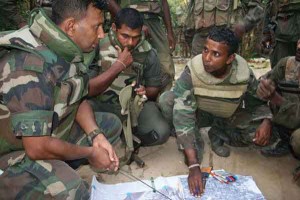
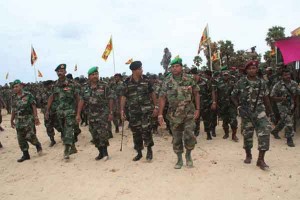
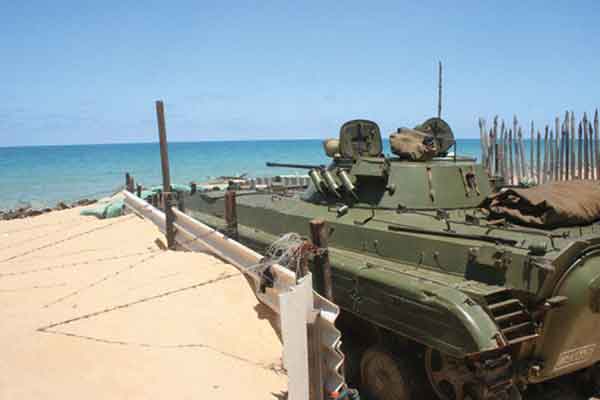
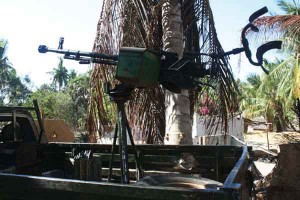
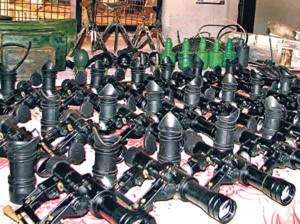
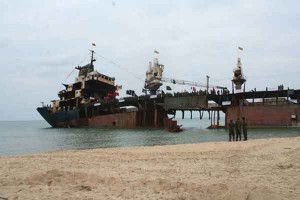
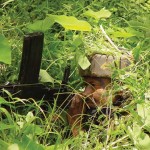
30 Countries fought supplied unlimited weapons against LTTE.
still it took 3 years to finish them
Seems they are the real heroes.
Have you thought about the war crimes and crimes against humanity committed by Srilankan army you are praising?
And why don’t you write about the India’s role in the massacre of innocents?
War crimes after war both parties ltte GOSL responsible mostly ltte killed so-many civilians ltte killed 800 police personnel who surrendered to them its the biggest crime and in Mulative 1800 army some of them surrendered to them
Finally no body won the war as many Tamils Sinhalese died we need not war we need tamil people ( representing last king of Sri Lanka ) to live with us with peace and harmony we need them their capabilities to develop this country
Whatever done by Srilankan armed force to Srilankan Tamils were done by Indian armed force in the end of 1980’s.
In his 2017 book, Mission Overseas, army officer turned journalist Sushant Singh describes an incident in which two Indian soldiers entered a militant’s house and shot dead a woman inside. They next saw her 2-year-old son, who reminded one of the soldiers of his own child back home. “Then I told myself that this child will grow up to be a terrorist, perhaps a suicide bomber,” this soldier recalls in Singh’s book. His platoon mate killed the boy, a decision this soldier tells Singh, “I will regret all my life.”
Now India should learn from Sri lanka, They had proper plan and time line. Everything did under Gotabaya Rajapaksha.
I think he is the best war planner in the Asia.
A Frank and well written article it highlights both political and military aspect of Lankan victory